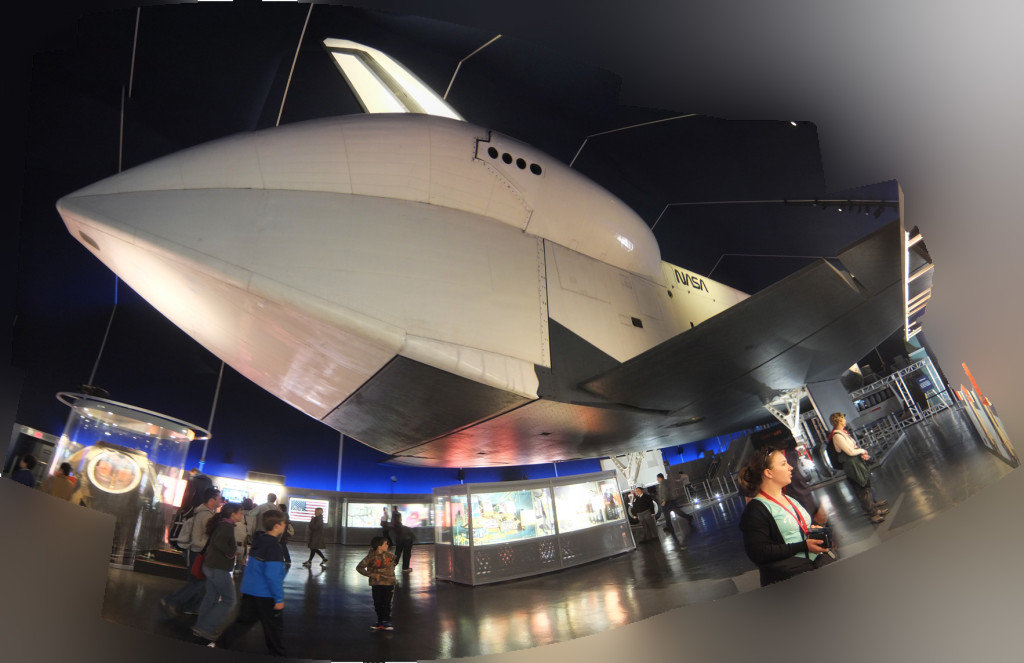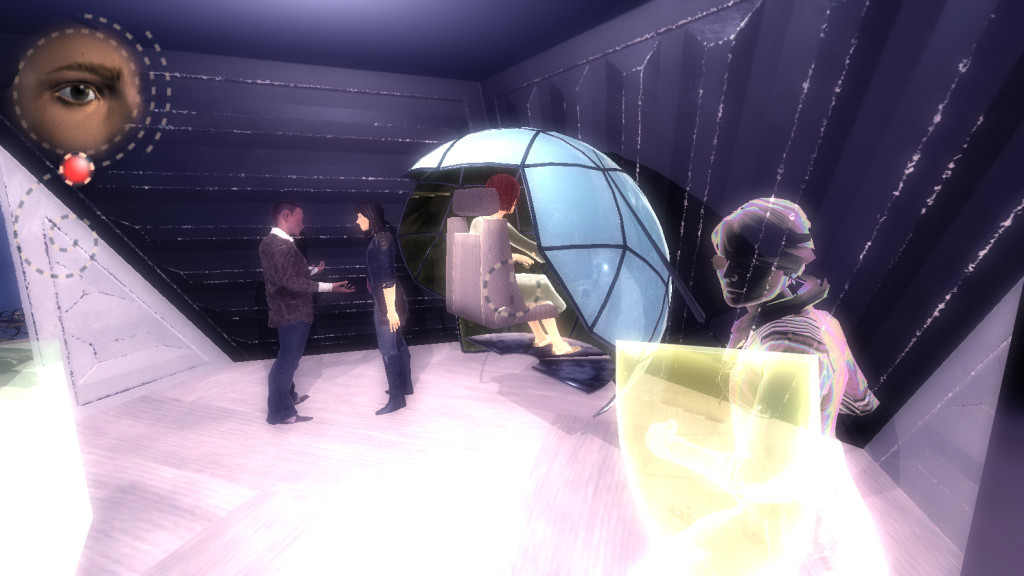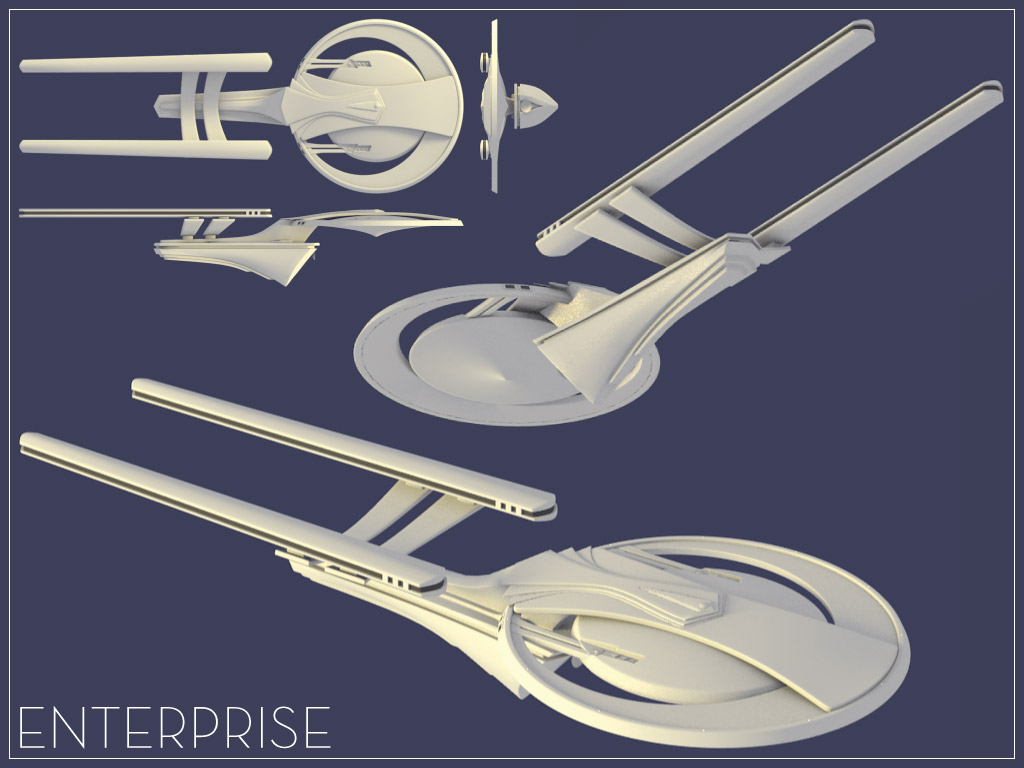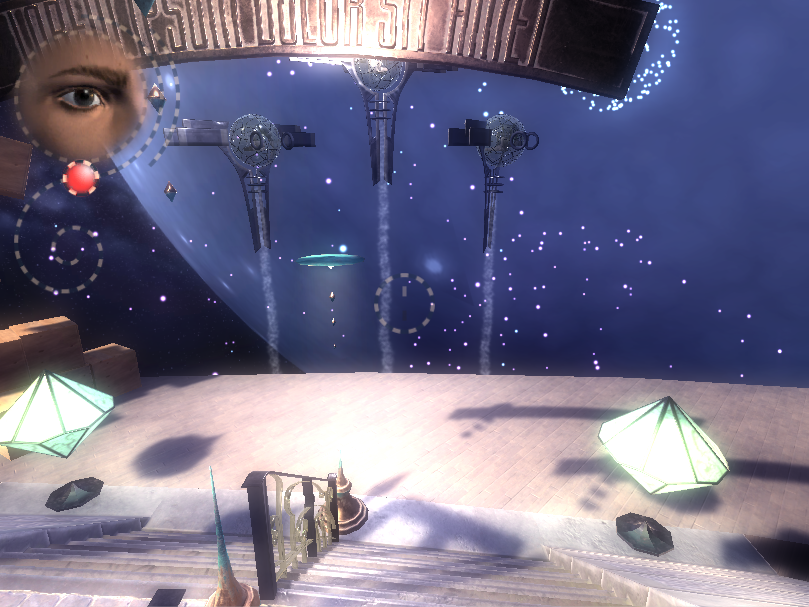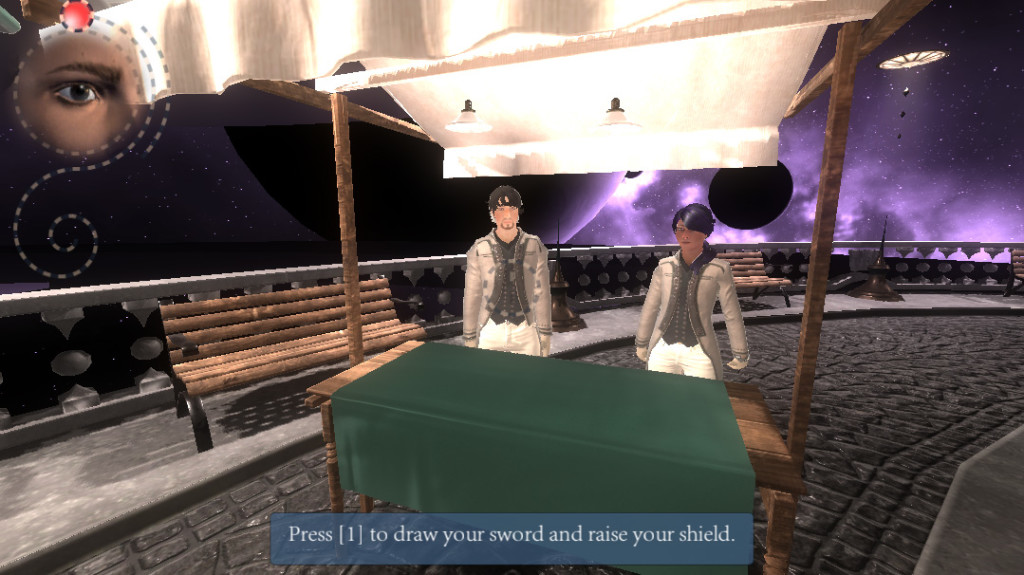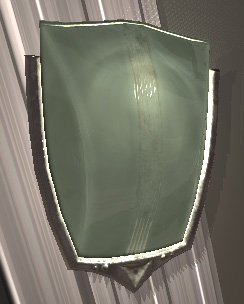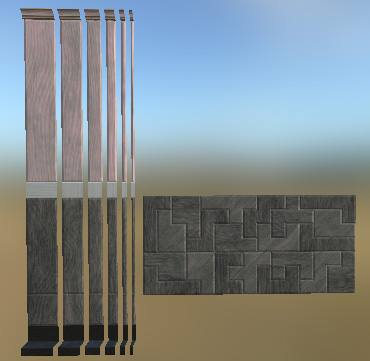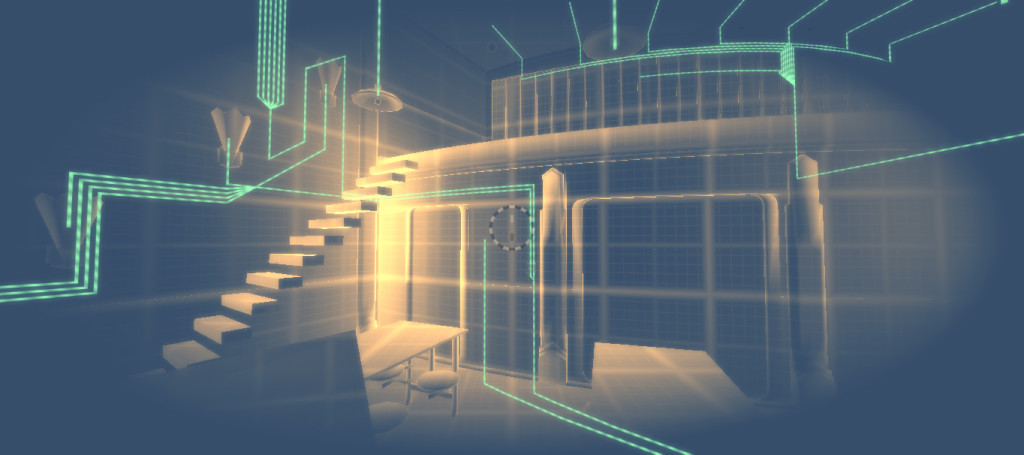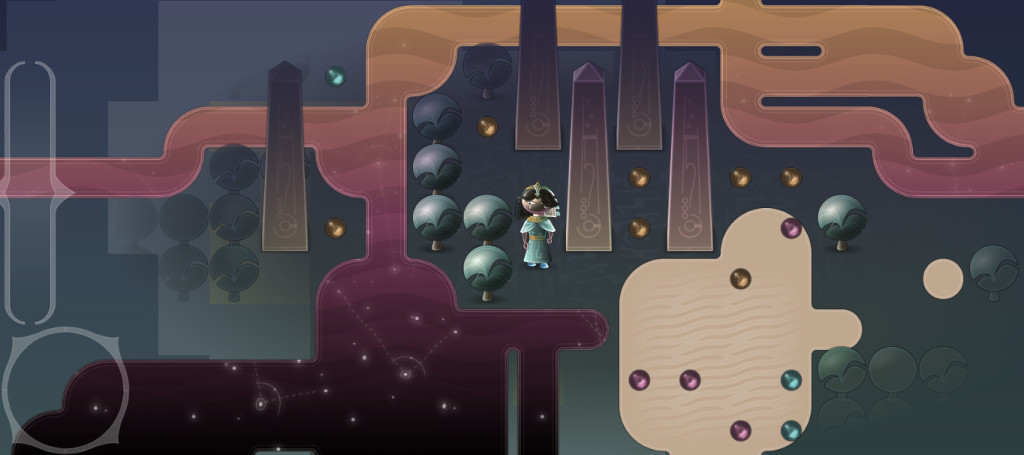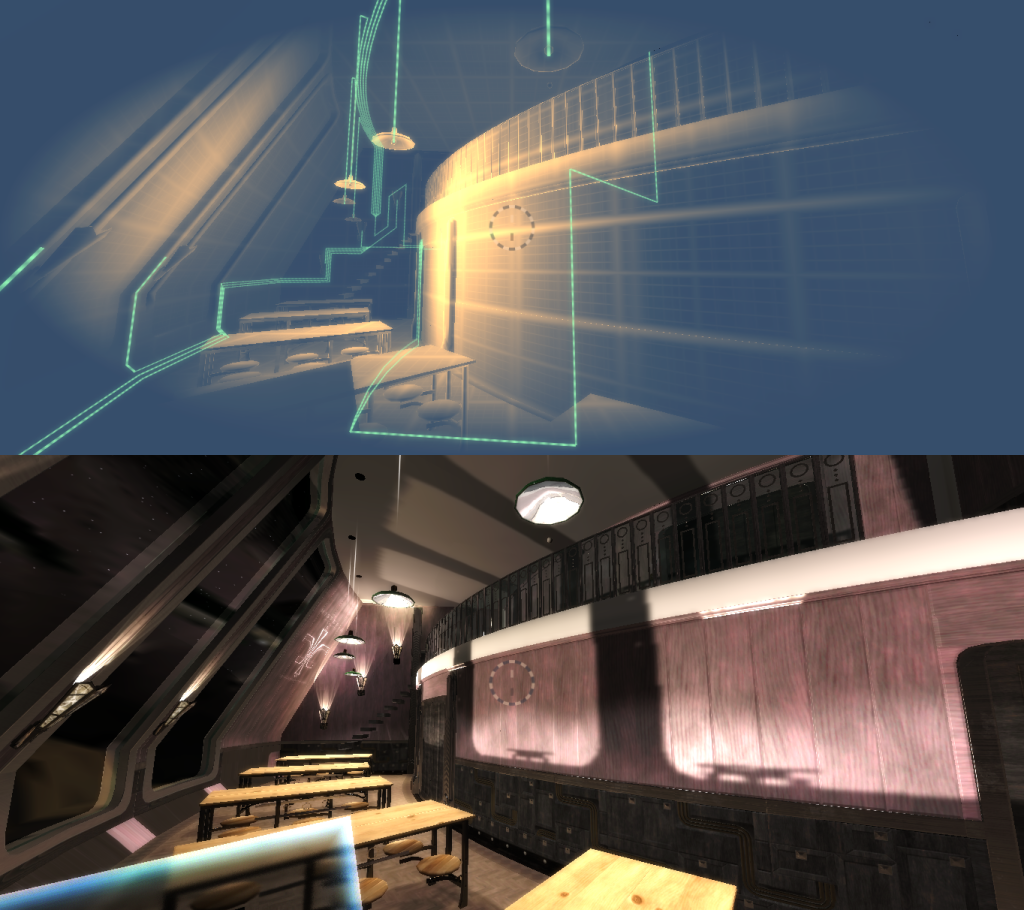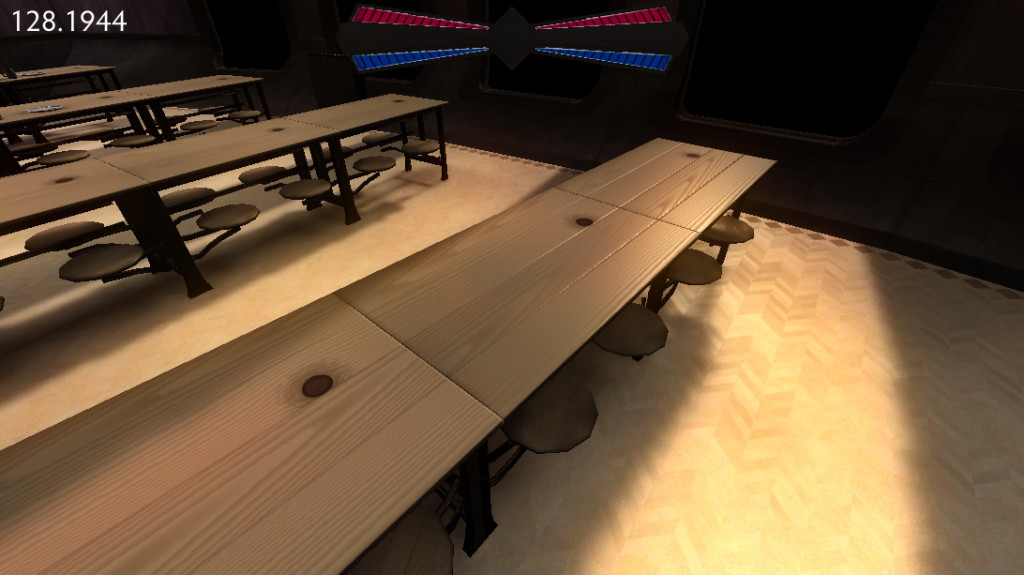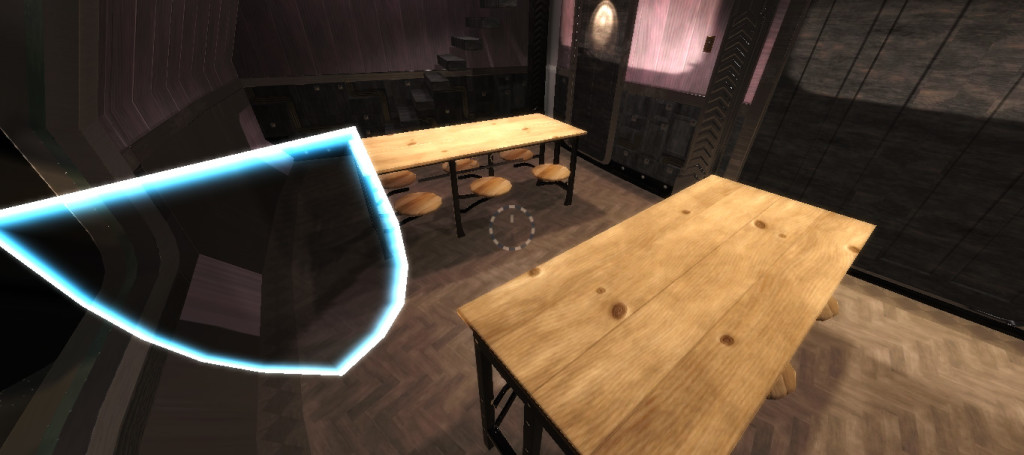I kind of knew that, sure. I’ve seen pictures of it and seen it on TV. I’ve watched it blast into space on giant movie screens. I can go to Wikipedia and find out that the Space Shuttle has a wingspan of 78 feet.
And yet, on some very basic level, I didn’t really know how big the Space Shuttle was.
* * *
One of my biggest non-technical problems with getting Tinselfly done — perhaps my very biggest problem — is that I have trouble imagining things. I have trouble looking at an untextured, blocky mockup of an level and knowing if my plans for it will work. I can’t get past the lack of texture.
* * *
The Eiffel Tower is big.
My wife and I visited Paris a couple years ago, and at first, we had no interest in visiting the Eiffel Tower. We’d seen it in photographs, and kinda thought it unappealing to look at.
But we saw it, in the distance while in Paris, and — who knows when we’d ever get back to Paris — decided to walk over to it and see what all the fuss was about.
It was a long walk.
The Eiffel Tower is not something to be seen from afar or in photographs. It is a space that you enter. We didn’t really appreciate the tower until we knew how long it took to walk from that flat postcard vista to being in it, until we were underneath it, surrounded by it.
* * *
One of my biggest non-technical strengths when it comes to Tinselfly is my ability to forget: to see my game world and mechanics the way a new player might see them, almost every day I start up my game. It is always new to me, just as mundane things in the real world frequently feel new to me.
* * *
My wife and I recently visited New York City, and while there, we saw an exhibit showcasing costumes from Star Wars. The costumes were beautiful — more often than not,. more beautiful to me in person than they appeared on film. But what really struck me was seeing the costumes life-size. Looking into Boba Fett’s visor, just above eye level. Seeing R2-D2 and BB-8 as real things, instead of abstract designs on a movie screen.
* * *
While in New York City, my wife and I also got to see the Space Shuttle, and it was far bigger than either of us expected.
I always say things are bigger than I expected. The Shuttle. The Eiffel Tower. BB-8. Every structure on the Mall of the U.S. Capitol.
When I say the Shuttle is bigger than I thought, what I mean to say is that I’m experiencing its weight and volume and three-dimensionality in a way I’ve never experienced it before. I’m not just thinking about size or looks:
I’m thinking about how high I’d have to reach up if I wanted to touch the bottom of the wing, if I could reach it at all.
I’m thinking about how long it takes to walk from one end to the other.
I’m thinking about how many bones I would break, If I fell from the top of the tail to the ground.
I’m thinking about how many people fit around and under it.
In my head, the Shuttle is a playground. Its dimensions are not measured in feet and inches, but in time and effort and danger and crowd populations.
* * *
When I look at an unfinished scene in my game, all I see is unfinished visuals. And when I try to imagine filling in details, all I think about is painting in unpainted blanks. I think it might be good to train myself to think in terms of these non-distance dimensions.
With that in mind, I give myself the following suggestion:
If I have an unfinished scene and I’m having trouble imaging the player’s flow through the scene or what’s supposed to be going on there in general, I will drop some temporary characters in it, start up my game and wander a while, thinking about those characters’ experience of the scene — not what they see, but what they imagine doing on this playground.
In many ways, it may be far easier for me to imagine characters’ reactions, than it is to imagine a whole textured scene and them imagine myself reacting to it.

